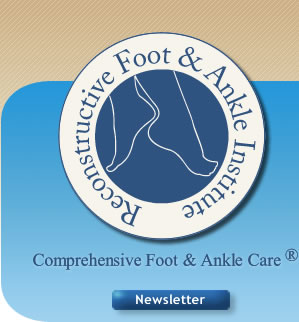Tendonitis/Tendonopathy
![]() NBC25 Medical Corner Tendonitis — Dr. Motran »
NBC25 Medical Corner Tendonitis — Dr. Motran »
Tendonitis occurs when you use a set of muscles too much causing straining of the tendons (soft tissue) that connect those muscles to your bones. At first, pain or swelling may come and go quickly. If you do too much too soon, your muscles may over-tire again. The strain may cause a tendon’s outer covering to swell or small fibers in a tendon to pull apart. If you keep pushing your muscles, damage to the tendons adds up and tendonopathy develops. Over time, pain and swelling may limit your activities. Depending on what causes the stress or overuse, tendons in the back, sides, or front of your foot may hurt. At first you may feel pain only during or after a workout, such as running or an aerobics class. As tendon damage adds up, however, your foot may hurt when you walk or even when you stand still. Most tendon problems get better without surgery. The following are descriptions of most tendon problems in the foot and ankle.
The Achilles tendon connects the calf muscle to the heel bone. If tendonitis occurs here you may feel pain when your foot touches down or when your heel lifts off the ground. Treatment of Achilles Tendonopathy begins with a felt heel lift that is ¼ inch thick. This lifts up the back of the heel and decreases the pull on the tendon. Orthotics and Orthopedic shoes may also prove beneficial. An Air Heel is a slip on type of neoprene sock that can take away the pain. A night splint also may be used to sleep in to hold the tendon in the correct position all night long which will help take away pain. If these conservative treatments don’t work then a surgical procedure may be needed.
The Posterior Tibial Tendon runs along the inside of the ankle and foot. If this tendon is strained, your foot may hurt when it moves forward to push off the ground, or you may feel pain when your heel shifts from side to side. Treatment starts with a strapping of the foot which supports the foot and decreases motion which also decreases pain. Then if this doesn’t take care of the pain we proceed with an Air Heel, night splint, Orthotics and PTTD braces. All of these devices work together to decrease your pain. If these over the counter devices don’t help then we proceed with a custom brace made just for your foot. Usually 90% of people get better with this type of therapy. If these don’t work we will talk with you about different surgical options.
The Anterior Tibial Tendon helps control the front of your foot when it meets the ground. If this tendon is strained, you may feel pain when you go down stairs or walk or run on hills. To treat this tendon we use a strapping, night splints and a dorsiflexion custom brace made just for your foot. An Air Heel and Orthotics may also help this tendon heal. Surgery may need to be done if these treatments don’t work but usually 90% of people get better without surgery.
The Peroneal Tendons wrap across the bottom of your foot, from the outside to the inside. Tendonitis here may cause pain when you stand or push off the ground. These tendons tend to get longitudinal tears in them and this problem will only go away if surgery is performed. An MRI may help in the diagnosis of this type of problem. If there is only tendonopathy and no tear then Orthotics, bracing, walking boots, and splints may help relieve the pain and allow relief without surgery.
